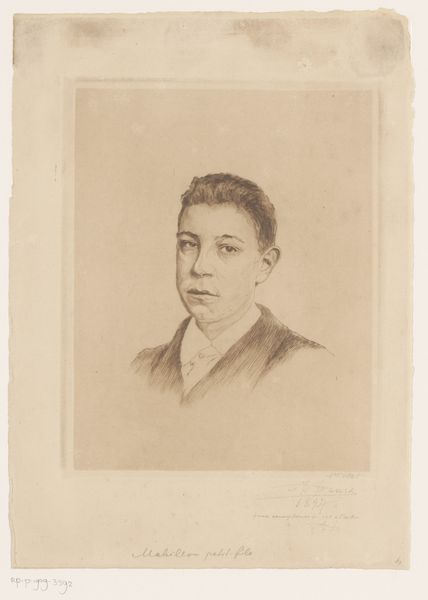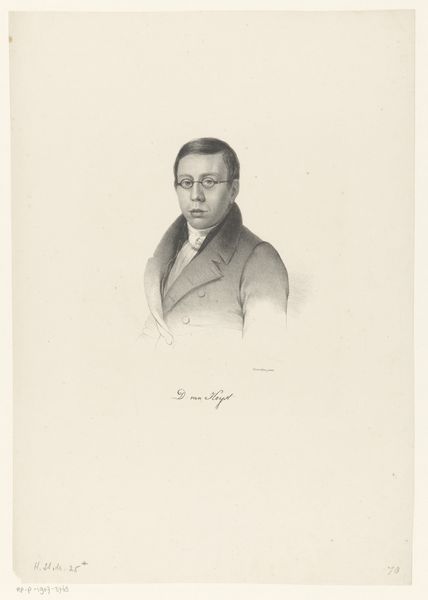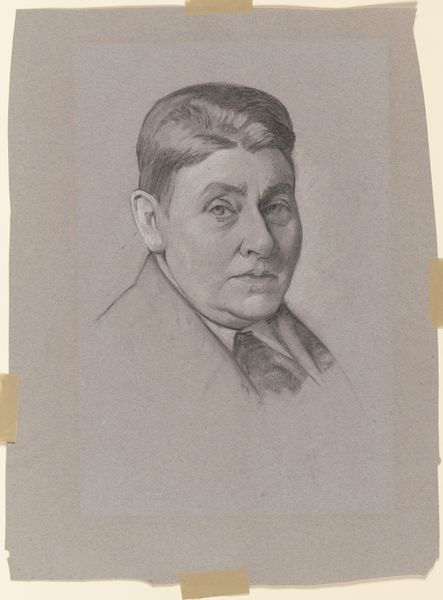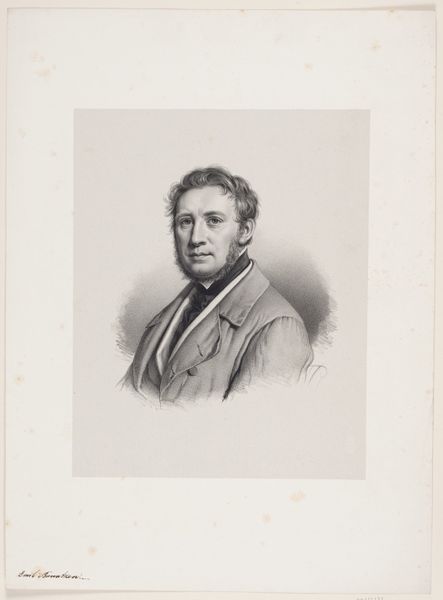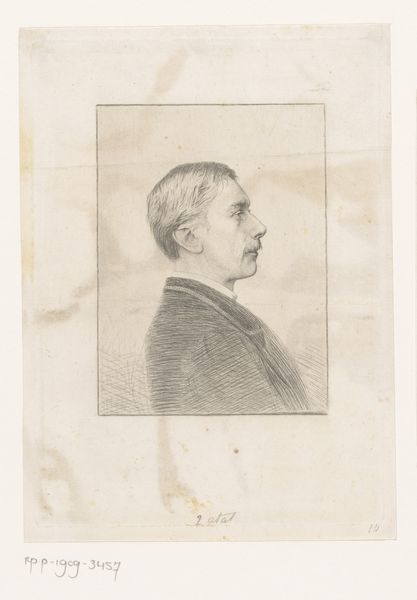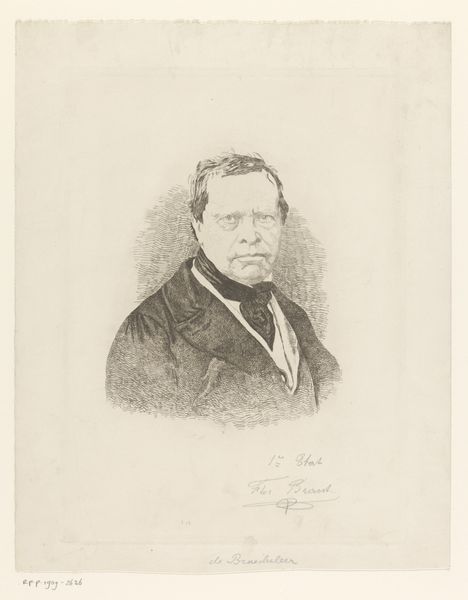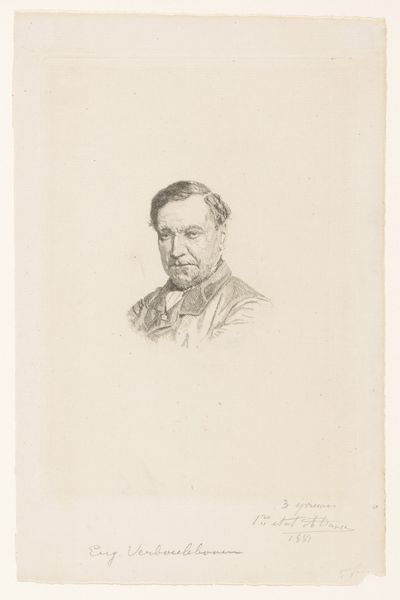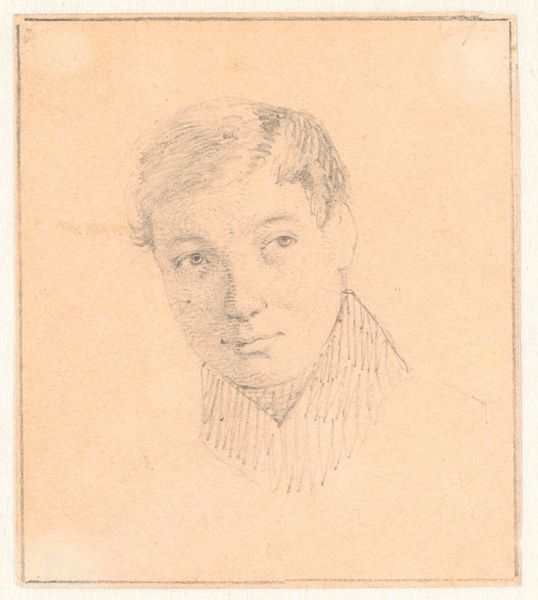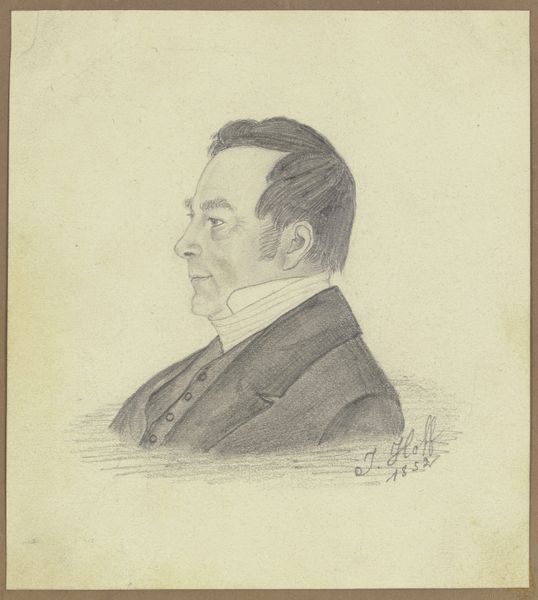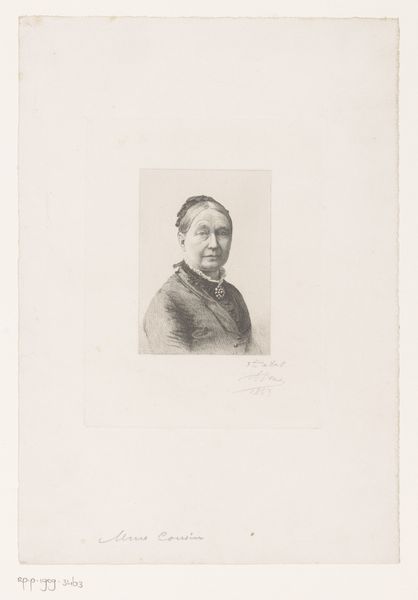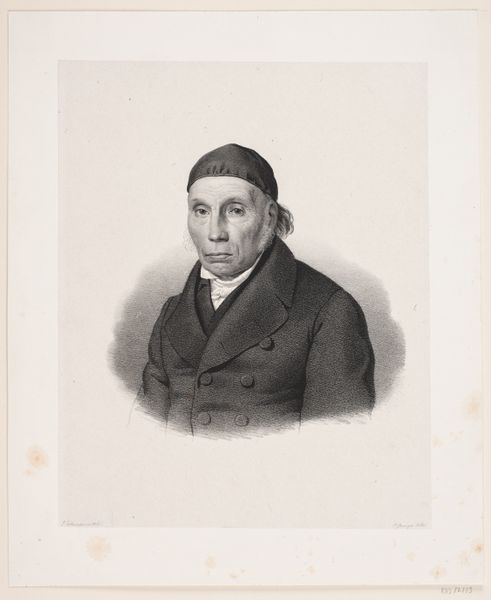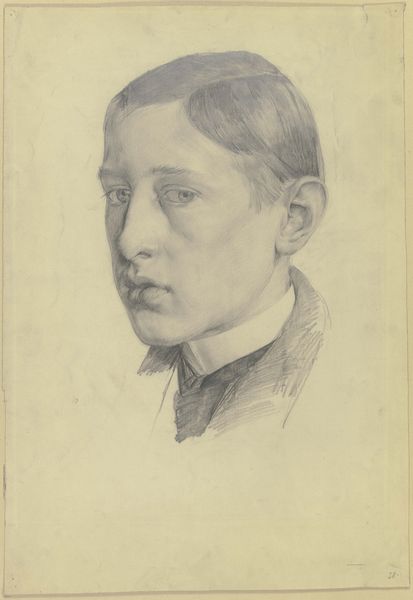
drawing, pencil, graphite
#
portrait
#
drawing
#
pencil drawing
#
pencil
#
graphite
#
portrait drawing
#
academic-art
#
realism
Dimensions: height 250 mm, width 199 mm
Copyright: Rijks Museum: Open Domain
Curator: Auguste Danse created this work, “Portret van de jongste zoon van Victor-Charles Mahillon,” in 1897. It’s a drawing made with pencil and graphite, and it's currently held here at the Rijksmuseum. Editor: What strikes me immediately is the palpable seriousness of this young man. He has the weight of the world, or at least boarding school, etched on his face. Curator: There’s definitely a weight to it. But Danse manages to capture youth itself, doesn't he? That fleeting moment before adulthood fully takes hold, the last echo of childhood innocence clinging to his features. Editor: Innocence, perhaps. But it's an innocence draped in the formal attire of the late 19th century: suit, tie, neatly combed hair. It speaks volumes about the expectations placed on young men of his class. Is it really innocence, or simply conformity taking shape? Curator: A bit of both, I suspect. The academic art style leans into realism, but there’s a certain idealization at play too. A gentle smoothing of edges, a careful play of light and shadow. The drawing shows technical mastery that still conveys, through soft pencil strokes, the delicacy of his age. Editor: Indeed, and it makes me think of how portraiture functions here, as both art and social documentation. Who gets memorialized in art, and what does that say about who mattered in that time? What sort of possibilities where open or closed to this young boy? Curator: Those are pertinent questions to keep asking! It's an exercise in empathy and analysis to really engage. Editor: Precisely. Ultimately, portraits remind us of what gets lost. Here, youth’s fleeting innocence perhaps reminds me of all children now, robbed of futures, safety, or freedom. Curator: That's an elegant bridge to present-day struggles. A sensitive closing thought.
Comments
No comments
Be the first to comment and join the conversation on the ultimate creative platform.
